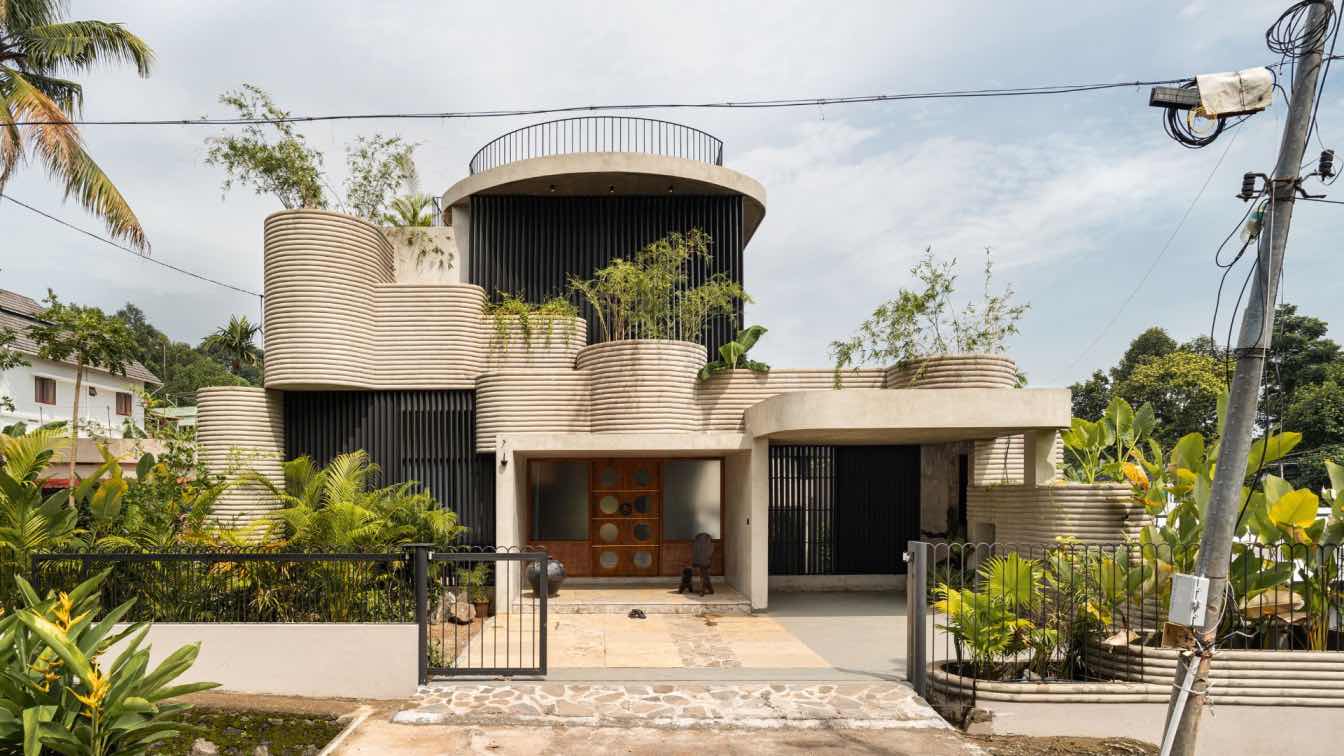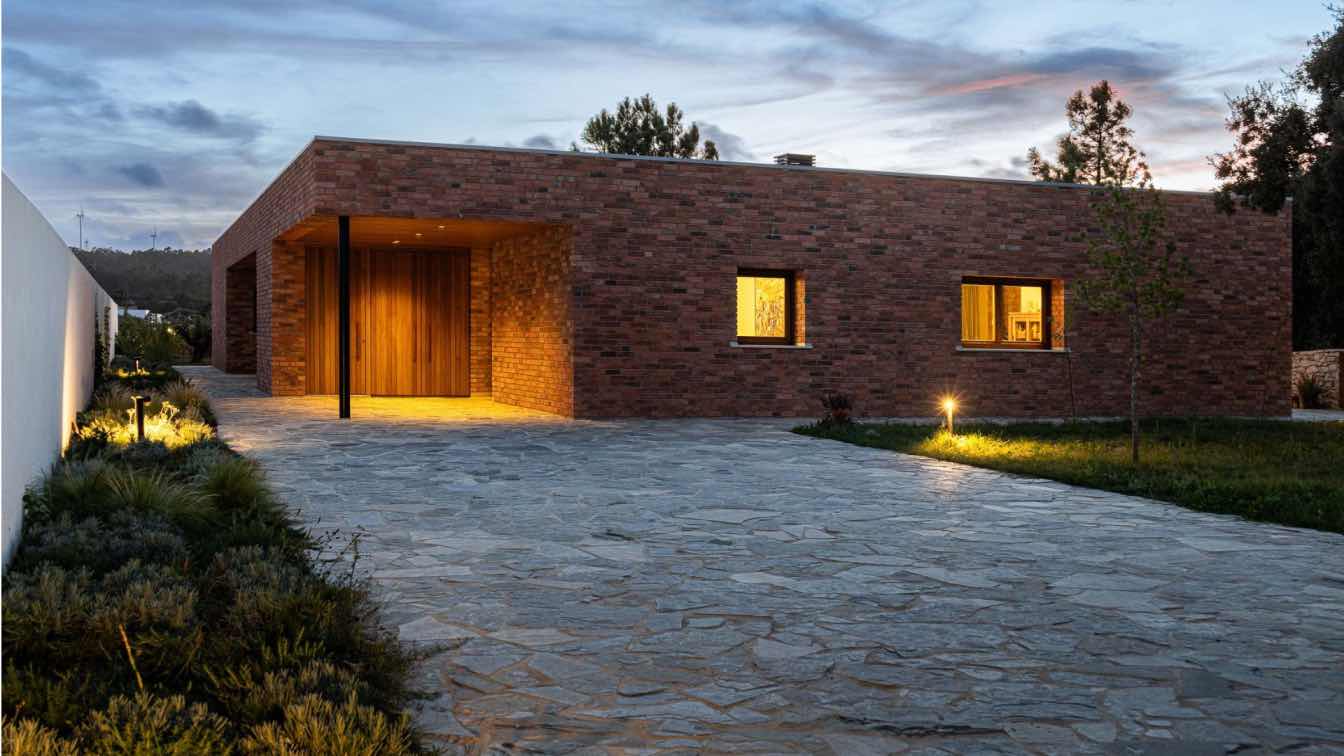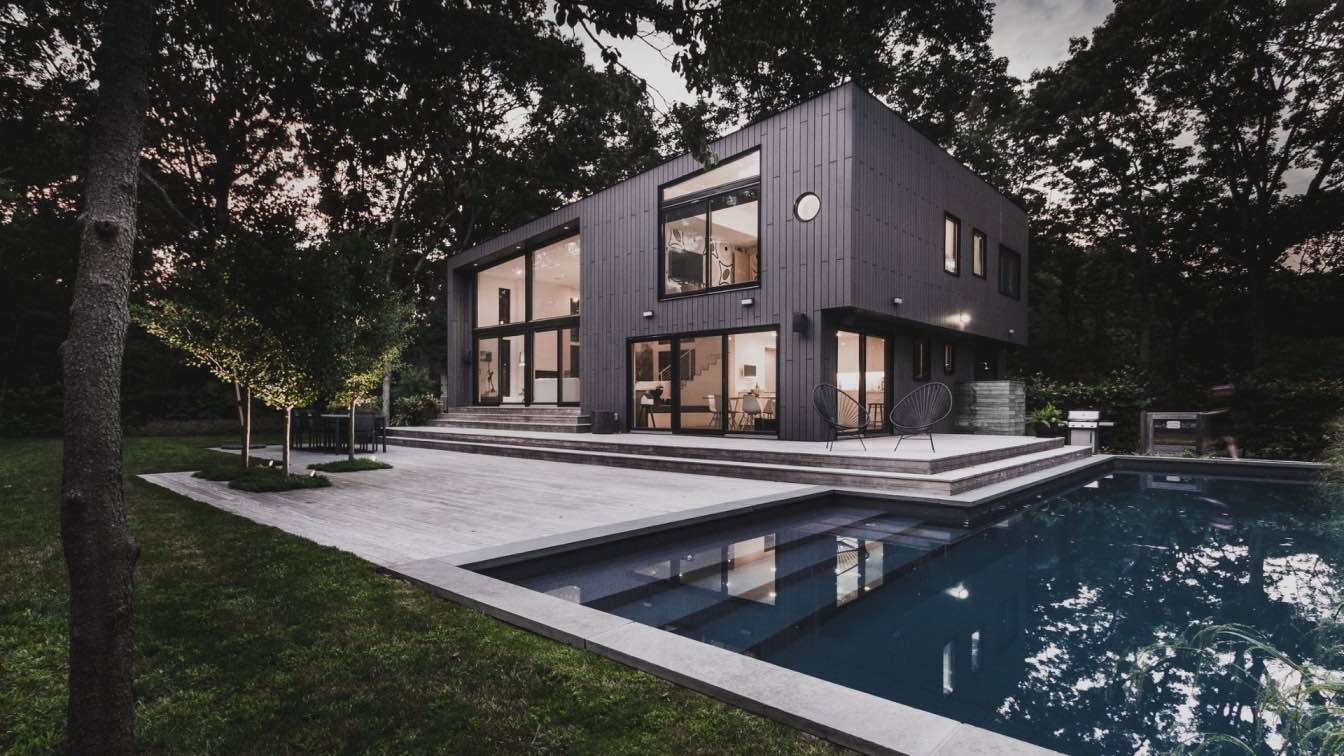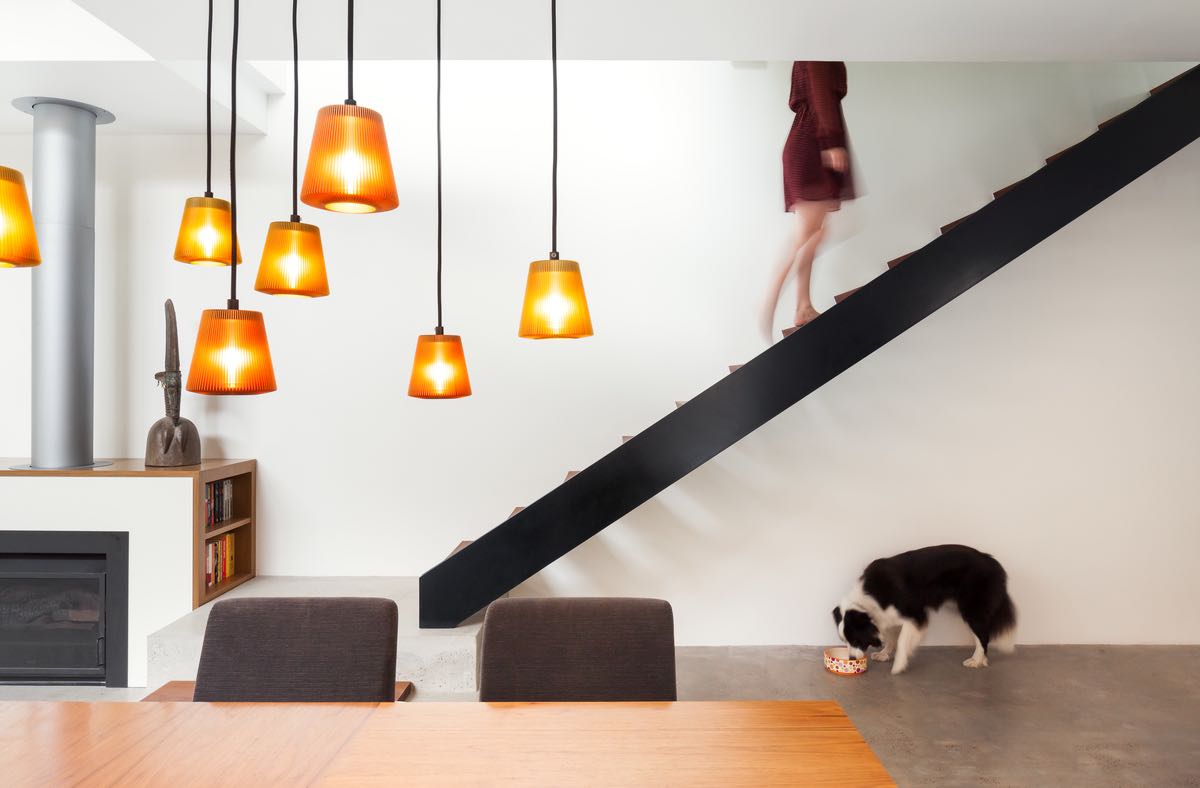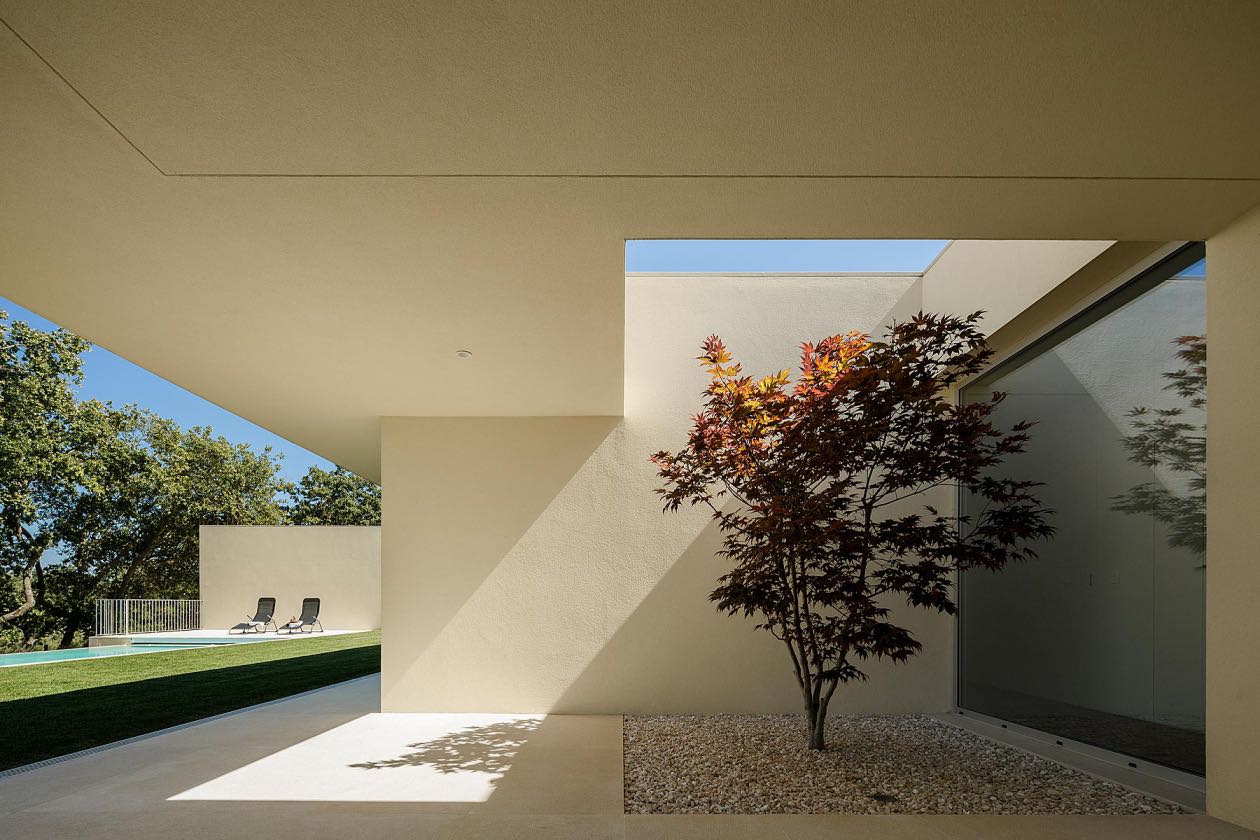"The architecture cannot be totally explained but must be experienced."
TropiBox Kochi features interconnected levels and open spaces, with pavilions designed to surprise and create a cohesive whole. Careful attention to detail, scale, and proportion enhances the human experience. Inspired by Sri Lankan architect Geoffrey Bawa, TAB/Tropical Architecture Bureau has crafted a unique blend of greenery-filled architecture and tropical modernism. The primary challenge was to design a home that provides each inhabitant with their own space while encouraging interaction. The building is organized using a vertical stacking strategy, with gardens and glass walls nestled between two main concrete façades. This design approach improves the microclimate by introducing natural ventilation and daylight into every room while the alternating openings enhance visibility and interaction among family members.
The I-shaped plan creates two distinct levels due to the existing site, separating public and private zones. The central dining area serves as a communal gathering space, receiving abundant sunlight through a roof opening, and connecting to the kitchen, garden courtyard, and pool. Palms and plants form various courtyards, linking the open living room, dining area, bedrooms, and study. The vertical variation of spaces offers interesting sightlines and maintains natural ventilation, providing a comfortable environment in Kerala's tropical climate. materials such as natural stone, wood, and exposed concrete, combined with the microclimate, help reduce operational and maintenance costs. The architecture not only addresses functional and aesthetic concerns but also fosters a connection between people and nature.
The house's exterior is characterized by clean curved lines, planter boxes, and minimal solid forms, reflecting tropical modernism. Planter boxes on the front façade provide privacy and visual connections, creating a dynamic visual element that complements the surrounding built environment. The design emphasizes playing with levels, turning spaces like the living room, kitchen, family living area, and staircase openings into design elements. These spaces facilitate a seamless flow and movement, blurring the boundaries between indoors and outdoors and maximizing natural light and ventilation throughout.
The upper living area features no closed planes from east to west, with a mezzanine floor offering optimal north exposure and minimal south exposure, allowing free wind flow and natural lighting. One main courtyard is strategically placed alongside the compound wall, connected to the open kitchen and formal living area. The outdoor patio features a pool, offering a serene and relaxing space for residents. The dining area, located at the heart of the house, includes a large opening and double-height skylight, framing picturesque views of the entire house. This framing adds depth and meaning to the design, emphasizing the importance of personalized and meaningful experiences in architecture.
TropiBox Kochi is a captivating example of architecture that presents an introverted façade while revealing an invitingly open plan and surprising spatial experience inside. The result is a beautiful and functional space that embodies architectural principles while providing a serene and relaxing home for residents.
The front and back yards serve as buffer spaces to reduce heat from the outside environment. The front yard offers a relaxing area for morning coffee, where wind, sunlight, and the shadows of the curved lines on the planter box wall intersect. The mezzanine, a family space that includes a balcony or meditation area, contains two bedrooms (one for the couple and one for a baby), a kitchen, and a dining table. This shared space allows residents to feel the breeze and enjoy the interplay of shadow and sunlight as they move from the ground floor to the stairs.
Using simple materials and energy-efficient designs, TropiBox Kochi fosters a deeper emotional connection with the environment, encouraging residents to experience all the seasons of Kerala. The home promotes human interactions, offering a functional space that harmonizes with the environment. It features natural air conditioning and temperature-balancing mechanisms, focusing on both the interior and exterior environment to support the family's well-being.


















































